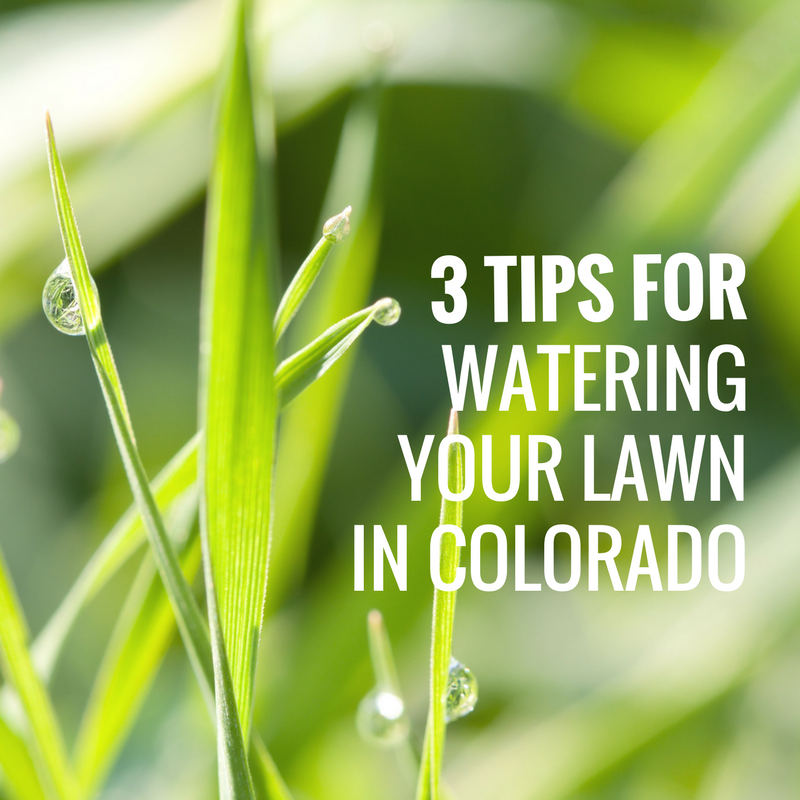We all know that Colorado weather can be a bit fickle, to say the least, as exhibited by our recent mid-May blizzard. Between the 100 degree days, sporadic snowflakes and occasional tornado warnings, it’s enough to leave any Coloradan staring out the window in bewilderment. While we can’t predict the weather for you, we can offer a few tips when it comes to watering your lawn this summer.
Tip #1: Provide Your Lawn with Right Amount of Water
You don’t need to go overboard to ensure that your grass gets a good soaking. ½-1 inch of water will moisten the soil about 6-8 inches deep. Going above or below this ideal amount will lead to dry grass or drowned grass – neither of which end pretty.
So how exactly does one measure ½-1 inch worth of water? Stand in your backyard with a ruler while the sprinkler runs? Well…sort of. A quick and easy way to determine just how long it takes for your sprinkler to dispense ¾ inches of water is to set out small containers in each sprinkler zone. Draw a line on the containers to mark the ¾ inch mark, and note how long it takes for your sprinklers to fill the container to that line. While it may sound a bit tedious, it’s worth the wet flip-flops to protect the health of your grass.
Tip #2: Water Your Lawn at the Right Time
Although Colorado generally has pretty low humidity, moisture in the air rises at night. The humidity between 10 p.m. and 6 a.m. – coupled with the cool air and less wind – creates the most optimal environment for watering your grass.
Although it may not be the end of the world to water outside of this time frame, it’s best to stick to this period for a couple of reasons. When humidity is high, the air doesn’t suck the moisture from your grass, thus allowing it to soak in and do its job. Second, an excess of water on the grass blades leads to disease and fungus. Watering during a dewy time helps wash away disease-causing plant tissues that are exaggerated by the dew, which results in healthier grass.
Tip #3: Get on the Right Watering Schedule
While we put quite a bit of emphasis on watering your lawn, especially after installing new sod, it’s important to not water too frequently if your grass is well-established. To avoid overwatering and faint-worthy water bills, hold off on running the sprinkler system until the blades start to wilt.
This might seem a little contrary to instinct, but trust us on this one. Water-logged soil doesn’t get enough oxygen to foster appropriate root growth, and you already heard what we had to say about diseases caused by too much water. To be on the safe side, monitor your lawn for signs of wilting before switching on the sprinkler.
As always, the All Terrain crew is happy to help you attain the healthiest lawn possible. Give us a call at (970) 304-1183 to get started today.



